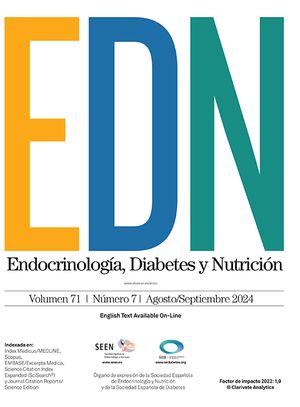La relación entre el síndrome de ovario poliquístico y el riesgo de enfermedad cardiovascular ha sido objeto de diversas publicaciones en los últimos años, pero sigue siendo un tema de debate actual. El análisis de las principales publicaciones sobre dicho tema demuestra que las mujeres con síndrome de ovario poliquístico presentan un perfil de alto riesgo cardiovascular, basándonos en que la mayoría de los estudios han demostrado la presencia de múltiples factores de riesgo cardiovascular (resistencia a la insulina, alteración del metabolismo de los hidratos de carbono, dislipemia, alteraciones de la presión arterial, disfunción endotelial, altos valores plasmáticos de proteína C reactiva, inhibidor del activador del plasminógeno tipo 1 y homocisteína). También, diferentes estudios de imagen han identificado una mayor prevalencia de alteraciones anatómicas y funcionales que indican la existencia de enfermedad cardiovascular subclínica (mayor grosor de la íntima-media carotídea, calcificación de arterias coronarias y mayor masa ventricular izquierda). Sin embargo, hasta el momento actual no ha aparecido ningún estudio prospectivo con un tiempo de seguimiento prolongado que haya estudiado la enfermedad cardiovascular en pacientes con síndrome de ovario poliquístico. Existen algunos estudios epidemiológicos, con criterios de inclusión muy variables (irregularidad menstrual, ovaries poliquísticos) y que han mostrado resultados dispares.
En conjunto, la evidencia citada indica que las mujeres con síndrome de ovario poliquístico tienen un alto riesgo de enfermedad cardiovascular. Se necesitan estudios prospectivos, con un número importante de pacientes y de largo seguimiento para poder aclarar si las pacientes con síndrome de ovario poliquístico tienen una mayor incidencia de enfermedad cardiovascular.
The relationship between polycystic ovary syndrome (PCOS) and risk of cardiovascular disease (CVD) has been the object of several publications in the last few years but continues to be debated. Most published studies document an adverse cardiovascular risk profile in PCOS patients, showing a high prevalence of insulin resistance syndrome, abnormal glucose tolerance, dyslipidemia, blood pressure alterations, endothelial dysfunction, and high plasma levels of C-reactive protein, PAI-1 and homocysteine. In addition, imaging studies have shown a higher prevalence of subclinical arteriosclerotic disease in PCOS (increased intima-media thickness, coronary artery calcification and left ventricular mass) than in control women. However, there are no longterm prospective studies that demonstrate a higher prevalence of clinical CVD in patients with PCOS. A few epidemiological studies have been performed with highly variable inclusion criteria (menstrual abnormalities, polycystic ovaries) and mixed results.
Taken together, the data presented indicate that women with PCOS are at high risk for CVD. However, prospective long-term studies with a large number of patients are needed to elucidate the relationship between PCOS and CVD.




